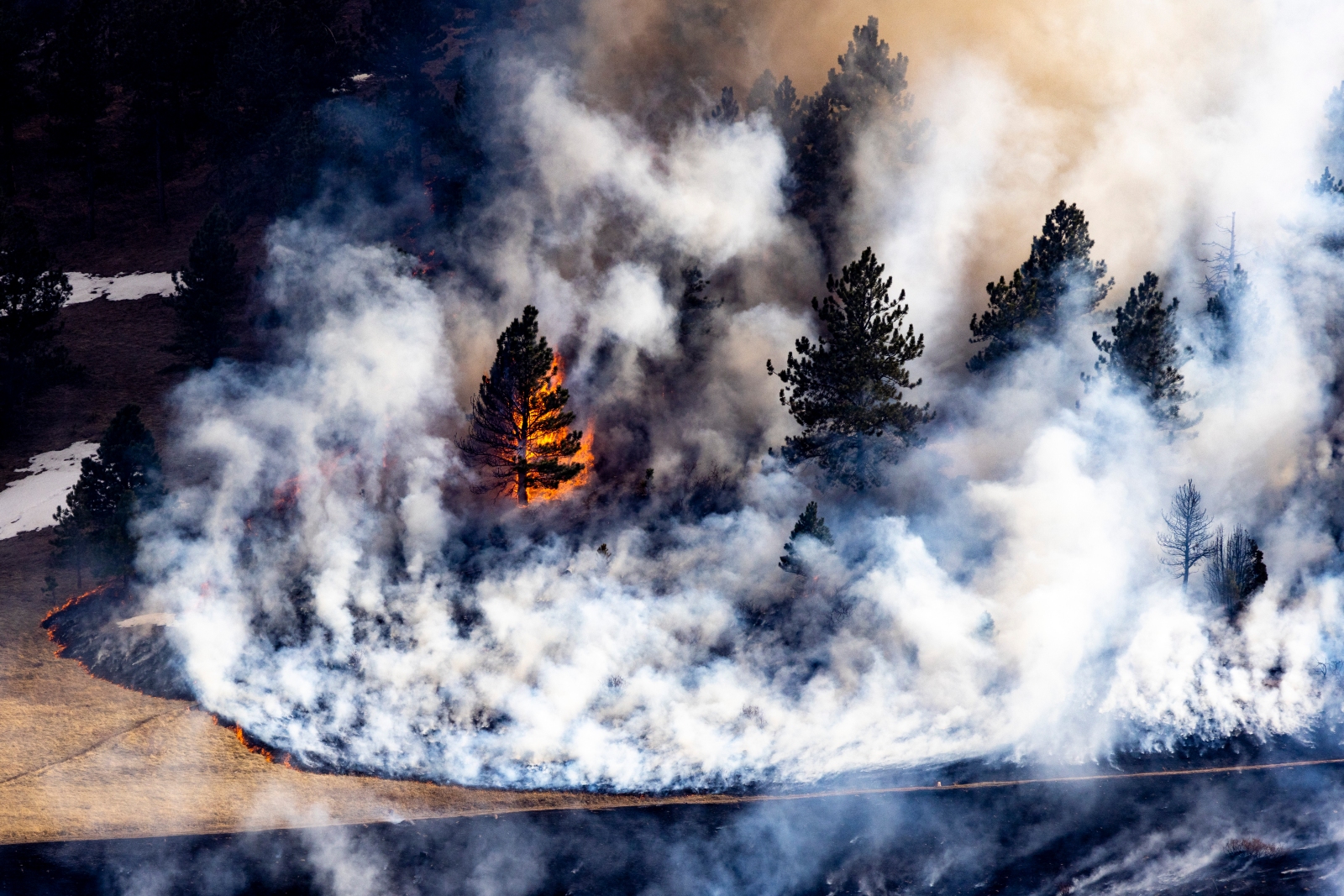It’s nearly three months into 2022, and the country has already seen wildfires burning across Florida, Texas, and Colorado. Hundreds of thousands of acres have been scorched, in an unusual start to spring.
In the last week of March, gusty winds and a record-setting heat wave in the West stoked fires near Boulder, Colorado. Emergency officials ordered 19,400 people to evacuate from the NCAR fire, named for its proximity to the National Center for Atmospheric Research, known for its climate science. According to one official, the unseasonal flames signal the end of Colorado’s fire seasons as the state used to know it. “There’s no longer a fire season, is really the concern,” said Brian Oliver, an incident commander on the NCAR fire, in a media briefing on Monday. “Fire season’s year round now. Anytime there’s not snow, it’s fire.”
Unseasonal, destructive wildfires like this month’s have long raised concerns that climate change is fueling more extreme blazes in the U.S. A recent study in Science Advances reported new evidence for this “palpable change”: Using records dating back to 1984, researchers found that, on average, fires are four times larger and three times more frequent since 2000. In the East and West, fires doubled in frequency compared to the previous two decades, and in the Great Plains, they quadrupled. They’ve also exploded in size: Great Plains blazes, for instance, are six times bigger than before. And not only have fires become more common, but they’ve also crept into places that hadn’t burned before, like parts of New England. Before 2000, there were virtually no extreme fires in Arizona, New Mexico, and Texas, according to the study.
“Projected changes in climate, fuel, and ignitions suggest that we’ll see more and larger fires in the future,” said Virginia Iglesias, the study’s lead author and a scientist at the Cooperative Institute for Research in Environmental Sciences in Colorado, in a release. “Our analyses show that those changes are already happening.”
Earlier this month, uncommonly dry weather in the Florida Panhandle spurred a trio of wildfires, which fed on miles of trees that Hurricane Michael left in its wake in 2018. That was followed by a major fire in Eastland County, Texas, that charred more than 54,000 acres and killed a sheriff deputy. Although Texas, unlike the West, usually experiences a spring fire season, the flames burned with unexpected speed and intensity, a result of persistent winds, dry conditions, and high temperatures.
There’s no doubt many in the U.S. have noticed these changes as they’ve faced evacuation orders year after year and hazy, smoke-filled skies. This month’s Colorado fires are in the same area where flames destroyed more than 1,000 homes in December — just three months before. “I feel exhausted by all of this, and I just feel like enough as far as these fires and disasters,” Boulder County resident Alicia Miller told the Associated Press. “It’s just kind of a repeat.”
*Correction: This story originally misidentified the year.



